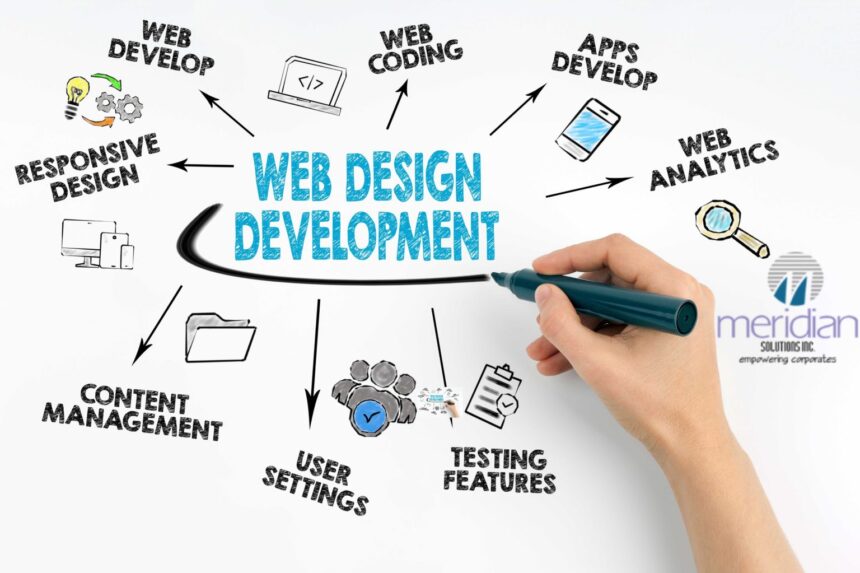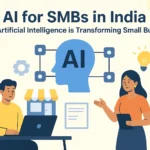In India’s competitive business landscape, just having a website is not enough. What truly matters is website conversion—the ability of your site to turn visitors into paying customers. A visitor might land on your home page, but unless your design supports conversion, you’re essentially giving away opportunities.
Visual design plays a massive role in how visitors judge your business within seconds. Studies show that people form impressions within a very short time—and design influences nearly 94 % of that impression. If your website fails to win trust at first glance, that’s a lost customer before you’ve even started.
Whether you run a local service, a manufacturing unit, or a start-up in a metro city or a smaller town, the principle of website conversion applies equally. You might have a great product, but your website must work as a bridge between your offer and the customer’s decision.
Why Website Conversion Should Be Your Focus
Putting energy into design and conversion isn’t vanity—it’s necessity. When your website is built for conversion, you:
-
Build trust with your prospective customers.
-
Communicate your value with clarity.
-
Make the path to purchase intuitive and simple.
-
Create a stronger brand identity that stays in customers’ mind.
In India especially, where consumer behaviour is evolving fast and choices are many, your website must not only look good—it must work. Good website conversion means your website becomes a sales tool, not just a digital flyer.
7 Proven Design Strategies for Better Website Conversion
1. Design for Visual Hierarchy
When someone lands on your website, you have mere seconds to capture attention. So your design must highlight the most important message first. This is the backbone of website conversion.
Begin with a bold headline or unique selling proposition (USP) that states clearly what you do and why it matters. Follow with supporting visuals and a strong call-to-action (CTA). Use size, colour, contrast and spacing to guide visitor focus:
-
Larger elements draw eyes first.
-
High-contrast colours highlight CTAs and headings.
-
Proper spacing (white space) makes elements readable and grouped meaningfully.
If you apply these patterns, your site will help visitors recognise value quickly—and that improves website conversion.
2. Include Trust-Building Elements
Trust is vital in driving website conversion. No matter how polished your site is, visitors won’t act unless they believe in you. A brand that appears credible will convert far better.
Include elements such as:
-
Logos of companies you have served or projects completed.
-
Customer testimonials—written or video—to show real outcomes.
-
Case studies showcasing problem-solution-result formats.
These elements reassure visitors, reduce risk, and boost your website’s ability to convert.
3. Stay On-Brand Consistently
Branding isn’t just about a logo and colours—it’s about the feeling and message you carry. Consistent branding makes your website memorable and supports website conversion by making your offer stand out.
Research how competitors present themselves—tone, colors, fonts, visuals—and then aim to be different. Decide how your audience should feel when they engage with you. If you appear friendly, casual, or premium—your design must reflect that. Use brand guidelines so every page and element stays consistent.
4. Build Mobile-Friendly Designs
In India, mobile devices dominate website traffic. For many businesses, more than 60% of visitors will come from phones. A strong mobile experience is essential for strong website conversion.
Make sure you use:
-
Responsive design so your site adapts to screens of all sizes.
-
A mobile-friendly navigation like a hamburger menu.
-
Compressed images/videos to improve load speed.
-
Testing across phone, tablet and desktop.
-
Speed tools like PageSpeed Insights to ensure fast load times.
A site that performs well on mobile will have higher conversion rates than one that doesn’t.
5. Use High-Quality Visual Content
Images and videos aren’t optional extras—they’re central to website conversion. The human brain processes visuals faster than text. Many visitors are visual learners.
Use product photos, demonstration videos, dynamic illustrations, or animations. If you’re offering a service, show it in action. These visuals explain, engage and influence decision-making far better than long paragraphs of text.
6. Create Clear and Compelling CTAs
Your website might look good, but if there’s no clear direction, conversion won’t happen. That’s why compelling CTAs matter so much in website conversion.
Keep these in mind:
-
Use specific CTAs: “Start free trial”, “Download guide in 2 minutes”.
-
Make them actionable: “Book a call”, “Buy now”.
-
Tie to emotion: “Enjoy effortless mornings”, “Feel confident”.
-
Reduce hesitation: “No credit card required”, “30-day money-back guarantee”.
-
Use urgency where appropriate: e.g., countdown timers, limited seats, number of items left.
Only one or two CTAs per page works best—too many dilute focus and damage website conversion.
7. Remove Friction from the Process
Friction is the silent enemy of website conversion. Anything that forces a user to pause, hesitate or navigate away reduces the chances of action.
To minimise friction:
-
Ensure pages load quickly (aim for under one second).
-
Simplify sign-up or purchase flows to one or two steps.
-
Use minimal form fields.
-
Make important pages reachable in one click from the home page.
When you optimise ease and experience, you lift website conversion significantly.
Conclusion
Designing a website for conversion is not just about looking good—it’s about being effective. If you connect visually, build trust, stay on-brand, cater to mobile, use strong visuals, deliver clear CTAs and minimise friction, your website becomes a powerful sales-tool.
For Indian business owners and leaders, it’s time to shift our mindset: your website isn’t just your digital DOOR—it’s your digital SALES floor. The difference between a visitor who bounces and one who becomes a customer often lies in how well your website handles the journey from first glance to final click.
Focus on website conversion, build with purpose, and you’ll turn browsers into buyers.
Image Credits: Meridian
🔗 For more articles on startup growth, fundraising strategies, and business insights for Indian founders, visit: Udyamee India Magazine








